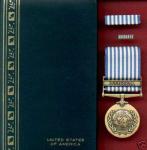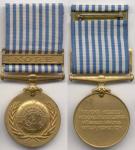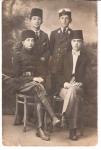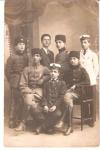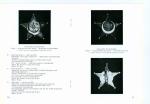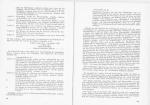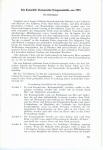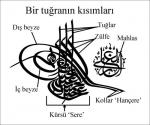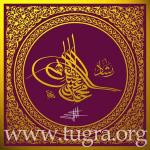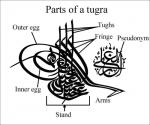HELLO,
HERE IS SOME INFORMATION ABOUT THE OTTOMAN SULTAN TUGRAS AND EXPLANATION OF SULTAN RESAD'S TUGRA.
PLEASE CHECK YOUR TWM TUGRAS AND THE ORIGINAL TUGRA OF SULTAN RESAD. WHO CHANGED HIS TUGRA ON HIS SEVENTH YEAR OF REIGN (1333) 1914.
I HOPE THIS WILL HELP.
ALL THE BEST
demir
Tugras In Ottomans (www.tugra.org)
In Ottomans some viziers in borderline states were permitted to use tugra of the sultan for important and political matters depending on the far distances. This measure lasted upto Kemankesh Kara Mustapha Pasha and ended in his period (year 1640-43) (1).
All of the following definitions in historic Ottoman documents are equivalents of tugra: “tevki-i hümâyun” “tevki-i refî” “tevki-i refi-i hümâyun” “nişân-ı şerif-i âlîşân-ı sultanî” “tuğrây-ı garrâ” “tuğrây-ı garrây-ı sâmi mekân-ı hâkanî” “nişan-ı hümâyun” “tuğray-ı meymun” “misal-i meymun” “misal-i hümayun” “nişan-ı şerif-i âlîşan” “alamet-i şerife” (1).
It is observed that great viziers, state viziers and seigniories used tugra-like signatures (panche-claw-) in official documents. The emerging date of these signs and whether they were used before Ottomans is unknown. Panches were written in Arabic letters on over-right, mid or down-side of the document depending on the importance of the subject person. Panches are seen at left side of the documents in Otoman documents with western languages. As the difference, panches include only one curve. Double curves could be only in Tugras. Panches left their role to seals in mid 19th century (1).
The earliest Ottoman tugra belongs to 2nd Ottoman Sultan Orhan Gazi. Two documents bearing this tugra are discovered (2). A tugra belonging to first Ottoman Sultan Osman Gazi has not been encountered yet to this date. So there were 36 Ottoman Sultans but 35 sultan tugras. (Note: we are informed that a coin bearing - Osman bin Ertuğrul bin Gündüz Alp- is found)
It is accepted that the tugras passed to Ottomans from Great Selcuks via Anatolian Seljuks and seigniories (1). The tugras were used on various places and objects throughout Ottoman Empire, they became a form of Ottoman-Arabic calligraphy and after completing its official role, became the possession of history (3). Today it is kept alive by calligraphers for artistic purposes.
Initially tugras were used on official documents (e.g. fermans: order of sultan) to give formality, but later on they are seen on coins, flags, stamps, passports, official monuments, official buildings, war ships, mosques and palaces as a symbol of sovereignty (1).
The tugra, on it’s own, it’s peculiar to the Turks. The form of the tugra is peculiar to itself. Neither is anything similar to the tugra, nor is the tugra similar to anything else..(4). While preserving the form of the familiar tugra; to reconcile the name of the sultan with this form is a difficult art. To view the evolution of tugras with repeating and changing parts from Orhan Gazi’s to Sultan Vahideddin is very interesting. In this state the complete series of Ottoman Tugras resemble a film fragment of 600 years of an art. With the serious symbolic meaning, the tugras are seen at the top of documents not at the end... (4).
The first 20 tugras of the series are a topic of history of calligraphy without a significant artistic value. But the tugras of Mehmed the Conqueror (7th sultan) and Suleiman the Magnificient (10th sultan) should be excluded from tis statement because they are summits of first 20 tugras.
Although the word “tugra” comes from earlier times than Ottomans, and similars were used in documents of previous Turkish states, Ottoman tugras has no common sites with formers other than name similarity. The writing style of the words “Orhan” and “Osman” in the tugra of the second Ottoman Sultan Orhan Gazi formed the skeleton for subsequent tugras (3).
The size of the tugras over documents were harmonious with the text conditions. Placing flowers or pseudonym of the sultan were introduced in later periods (1).
After the tugras evolved as a monogram, the calligraphers entered the artistic dimension and tried to write better and better tugras. Other than tugras for sultans, verses from the Holy Quran, hadiths, prayers and the names of individuals etc. were written in the form of artistic tugra pictures.
After acceptance of the tugra of a sultan, its content and form was static throughout his sultanate. Of course there were small differences between tugras from one hand to another. Finding the owner of the tugra on an official Ottoman document is very helpful in determining the approximate date of the document. So much so that nuances within a sultan’s own tugra over time can often provide a date within a particular reign (3).
It is widely accepted that the most excellent tugra among all tugras is the tugra of Sultan Abdulhamid II written by master calligrapher Sami Efendy. Professor Ugur Derman calls this tugra as “sultan of tugras” (5).
References
1- Uzunçarşılı İ.H. Tuğra ve pençeler ile ferman ve buyuruldulara dair. Belleten, Sayı: 17-18 s. 101-157; 1941.
2- Orgun Z. Tuğralarda el-muzaffer daima duası ve şah ünvanı, şehzade tuğları, Mehmed II’nin tuğra, imza ve mühürleri. Türk Tarih Arkeologya ve Etnografya Dergisi. Sayı V. İstanbul, s. 203-220; 1943.
3-Umur S. Osmanlı Padişah Tuğraları. Cem Yayınevi. İstanbul,1980.
4-Boydas N. Osmanlı Tuğralarına Eleştiri Açısından Bir Bakış. http://yayim.meb.gov...giler/143/2.htm
5-Derman, Uğur M. Tuğralarda estetik. İlgi mecmuası, sayi: 33, s.16-24. 1982
PARTS of a TUGRA
1-Stand: The base of the tugra that includes the main text (the names of the sultan and his father, the appellations and the prayer “ever victorious”.
2-Eggs: (Beyze; Arabic: egg): Two ellipsoid curves on the left side of tugra.
3-Tughs: Three extensions at the upper part, like the letter “elif” in Arabic. They are not always the letter “elif”. Sometimes they are not a letter. Pennant like curves beside the tughs are called “zulfe” (Arabic: fringe).
4-Arms: two parallel arms starting from the eggs and running to the right side of the tugra.
In some tugras the pseudonym of the sultan may be seen at the upper right area.
Two eggs (Beyze) and three tughs are found in an evolved tugra. If the text content of the tugra does not provide these needs, additional unrelated figures may be included in some tugras. These are used to keep the classical form of the tugra and to provide similarity with earlier examples. They have no meaning but are for artistic effect to complete the form (3).




